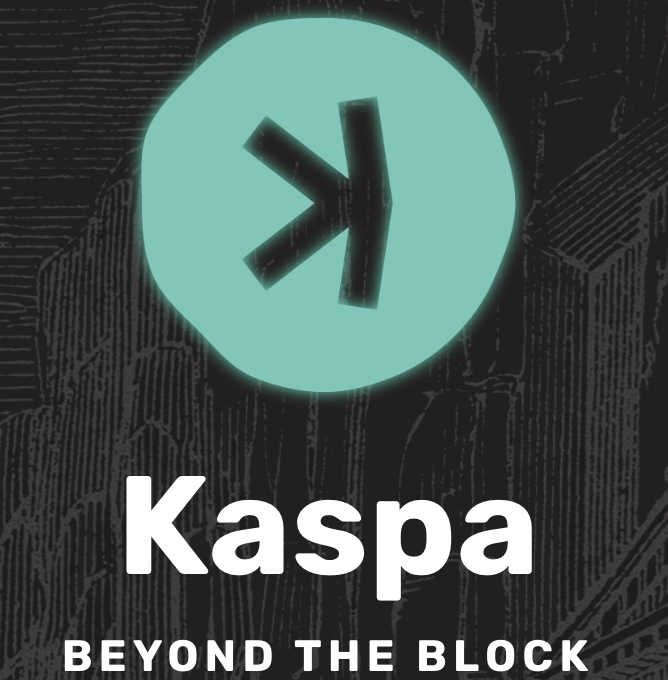
Introduction to Mica Regulation and Whitepaper Compliance
Mica regulation and whitepaper compliance are two critical aspects that businesses across various industries need to understand and adhere to. With the increasing focus on sustainability and responsible sourcing, regulatory bodies have implemented measures to address the ethical concerns surrounding the extraction and use of mica.
What is Mica Regulation?
Mica regulation refers to the set of guidelines and requirements established by regulatory bodies, such as the European Union and national authorities, to govern the production, sourcing, and use of mica. Mica is a mineral widely used in various industries, including cosmetics, electronics, and automotive, due to its unique properties. However, the extraction of mica has been associated with unethical practices, including child labor and unsafe working conditions.
The primary objective of mica regulation is to ensure that businesses engage in responsible sourcing practices, guaranteeing the traceability and sustainability of mica throughout the supply chain. Compliance with mica regulation is crucial for organizations to demonstrate their commitment to ethical practices, protect their reputation, and meet the expectations of consumers and stakeholders.
Understanding Whitepapers
Whitepapers play a crucial role in compliance with mica regulation. In the context of regulatory compliance, a whitepaper is a document that outlines an organization’s approach to addressing the requirements and guidelines set forth by mica regulation. It serves as a comprehensive guide for businesses to showcase their commitment to responsible sourcing, traceability, and sustainability.
Whitepapers provide an opportunity for organizations to communicate their policies, procedures, and due diligence processes regarding mica sourcing and use. They serve as a tool to demonstrate compliance with mica regulation and highlight the measures taken to ensure transparency and ethical practices throughout the supply chain. A well-structured and informative whitepaper not only helps organizations meet compliance requirements but also builds trust and credibility among consumers, investors, and other stakeholders.
In the following sections, we will delve into the key aspects of mica regulation compliance, including its scope, requirements, challenges, and strategies for developing an effective whitepaper. We will also explore case studies of organizations that have successfully implemented mica regulation compliance measures and discuss future trends and innovations in this area. By the end of this comprehensive blog post, you will have a solid understanding of mica regulation and whitepaper compliance, enabling you to navigate the complex landscape of responsible mica sourcing and use.
Overview of Mica Regulation Compliance
Complying with mica regulation is essential for organizations operating in industries where mica is commonly used. Understanding the scope and requirements of mica regulation is crucial to ensure ethical practices and responsible sourcing throughout the supply chain.
Scope of Mica Regulation Compliance
Mica regulation compliance extends to various industries, including cosmetics, electronics, automotive, and construction. These industries heavily rely on mica for its unique properties, such as heat resistance, electrical insulation, and shimmering effects. However, the extraction and processing of mica have raised serious concerns regarding human rights violations, particularly child labor and unsafe working conditions in some regions.
To address these concerns, regulatory bodies have established guidelines and regulations to promote responsible sourcing and eliminate unethical practices associated with mica extraction. Organizations involved in the production, sourcing, and use of mica must comply with these regulations to ensure the traceability and sustainability of mica within their supply chains.
Compliance with mica regulation involves meeting specific obligations and criteria set forth by regulatory bodies. These requirements typically include:
- Reporting: Organizations are required to provide detailed reports regarding their mica sourcing and use. This includes information on the countries of origin, extraction methods, and efforts made to address social and environmental risks.
- Product Labeling: Proper labeling of products containing mica is necessary to inform consumers about the responsible sourcing practices followed by the organization. Labels may include information about the origin of mica, compliance with regulatory guidelines, and certification seals.
- Traceability: Establishing a robust traceability system is crucial for mica regulation compliance. Organizations should be able to track the journey of mica from its extraction to its incorporation into the final products. This ensures transparency and helps identify any potential risks or unethical practices within the supply chain.
- Due Diligence: Conducting due diligence is an integral part of mica regulation compliance. Organizations are expected to assess and mitigate risks related to human rights violations, child labor, and environmental impacts associated with mica extraction and processing.
Challenges in Mica Regulation Compliance
Complying with mica regulation can present several challenges for organizations. These challenges include:
- Supply Chain Complexity: The mica supply chain can be intricate, involving multiple intermediaries and suppliers. Ensuring compliance at each stage of the supply chain requires extensive coordination and monitoring.
- Transparency and Traceability: Obtaining accurate information about the origin and processing of mica can be challenging, especially in regions with limited oversight and documentation. Establishing traceability systems to track mica’s journey can be complex, requiring collaboration among stakeholders.
- Verification and Auditing: Verifying the accuracy and reliability of information provided by suppliers can be difficult. Conducting audits and assessments to ensure compliance with mica regulation may involve significant resources and expertise.
- Limited Regulatory Framework: Mica regulation is still evolving, and there may be variations in requirements across different jurisdictions. Keeping up with the latest regulations and ensuring compliance can be a demanding task for organizations operating globally.
- Legal assistance: There are not enough legal people that know about MICA. Luckily web3legal.xyz can assist you with MICA compliance.
Addressing these challenges requires organizations to develop robust compliance strategies, implement effective due diligence measures, and collaborate with suppliers and stakeholders to promote responsible mica sourcing and use.
Creating a comprehensive and well-structured whitepaper is an essential step in demonstrating compliance with mica regulation. A whitepaper serves as a detailed guide that outlines an organization’s approach to addressing the requirements and guidelines set forth by regulatory bodies. It not only helps organizations meet compliance obligations but also showcases their commitment to responsible sourcing, traceability, and sustainability.
Importance of a Whitepaper in Compliance
A whitepaper is a powerful tool for organizations to communicate their policies, procedures, and due diligence processes regarding mica sourcing and use. It serves as a document that stakeholders, including consumers, investors, and regulatory authorities, can refer to when assessing an organization’s commitment to ethical practices.
One of the key benefits of a whitepaper is its ability to provide transparency. By clearly articulating an organization’s approach to mica regulation compliance, a whitepaper helps build trust and credibility among stakeholders. It demonstrates that the organization has thoroughly considered the ethical concerns associated with mica extraction and is taking proactive measures to address them.
Moreover, a whitepaper can act as a reference document during audits and assessments conducted by regulatory bodies or third-party certification agencies. It showcases the organization’s commitment to compliance and provides evidence of the due diligence processes followed in mica sourcing and use.
Components of a Mica Regulation Whitepaper
To develop an effective whitepaper for mica regulation compliance, it is essential to include key components that address specific requirements and guidelines. While the structure may vary depending on the organization and industry, the following sections are commonly included:
- Introduction: Provide an overview of the organization’s commitment to mica regulation compliance. Explain the purpose and scope of the whitepaper.
- Policy Statement: Clearly state the organization’s policy regarding responsible mica sourcing, traceability, and sustainability. Outline the objectives, principles, and values that guide the organization’s approach.
- Supply Chain Transparency: Describe the organization’s efforts to establish transparency in its mica supply chain. Discuss the systems and processes in place to track mica from extraction to the final product.
- Due Diligence Procedures: Outline the due diligence procedures followed by the organization to identify and address risks associated with mica sourcing. Include information about supplier assessments, audits, and remediation measures.
- Reporting and Monitoring: Explain how the organization collects and reports data related to mica sourcing and use. Discuss the monitoring mechanisms in place to ensure ongoing compliance with mica regulation.
- Collaboration and Stakeholder Engagement: Highlight the organization’s collaboration with suppliers, industry associations, and other stakeholders to promote responsible mica sourcing. Discuss initiatives taken to support local communities and improve working conditions in mica-producing regions.
- Continuous Improvement: Emphasize the organization’s commitment to continuous improvement in mica regulation compliance. Outline the strategies in place to address emerging risks and comply with evolving regulatory requirements.
Best Practices for Creating a Mica Regulation Whitepaper
Creating an effective whitepaper requires careful consideration of various factors. Here are some best practices to follow:
- Research and Familiarize: Gain a deep understanding of mica regulation and the specific requirements applicable to your industry. Stay updated with the latest guidelines to ensure the whitepaper reflects current compliance expectations.
- Collaborate Internally: Engage relevant stakeholders within the organization, including compliance officers, supply chain managers, and sustainability teams. Collaborative input ensures that the whitepaper accurately represents the organization’s practices and commitments.
- Be Transparent and Specific: Provide clear and concise information about the organization’s mica sourcing practices and due diligence procedures. Avoid vague statements and provide specific examples where possible.
- Include Metrics and Targets: Demonstrate progress and commitment by incorporating measurable metrics and targets in the whitepaper. This allows stakeholders to assess the organization’s performance against its stated goals.
- Seek Expert Guidance: Consider engaging external experts or consultants with expertise in mica regulation compliance. Their insights can help ensure that the whitepaper aligns with industry best practices and regulatory requirements.
By following these best practices and tailoring the whitepaper to the organization’s specific context, businesses can effectively communicate their commitment to mica regulation compliance and demonstrate responsible practices in their mica supply chains. CONTINUE WRITING
Implementing Mica Regulation Compliance Strategies
Implementing mica regulation compliance strategies is crucial for organizations to ensure responsible mica sourcing and use throughout their supply chains. Compliance requires a multi-faceted approach, involving internal processes, supply chain management, and ongoing monitoring and auditing. By integrating compliance strategies into their operations, organizations can effectively meet the requirements of mica regulation and mitigate associated risks.
Internal Compliance Processes and Procedures
Developing robust internal compliance processes and procedures is the foundation for successful mica regulation compliance. Organizations should consider the following steps:
- Policy Development: Establish a clear and comprehensive policy that outlines the organization’s commitment to mica regulation compliance. The policy should align with regulatory requirements and reflect the organization’s values and objectives.
- Training and Awareness: Provide training programs to educate employees about mica regulation, ethical sourcing practices, and the importance of compliance. Ensure that employees understand their roles and responsibilities in adhering to the policy.
- Supplier Engagement: Engage with suppliers to communicate the organization’s expectations regarding mica regulation compliance. Establish a code of conduct or supplier agreement that includes compliance requirements, and regularly assess supplier performance.
- Documentation and Record-Keeping: Maintain thorough documentation and records related to mica sourcing and use. This includes supplier contracts, due diligence assessments, audit reports, and any other relevant documents to demonstrate compliance.
- Internal Audits: Conduct regular internal audits to assess adherence to mica regulation compliance. This helps identify areas of improvement, ensure the effectiveness of internal processes, and verify the accuracy of documentation.
Supply Chain Management and Due Diligence
Managing the mica supply chain effectively is essential for compliance with mica regulation. Organizations should implement the following strategies:
- Supplier Evaluations: Conduct thorough evaluations of suppliers to ensure they meet mica regulation compliance requirements. Assess their policies, practices, and performance related to responsible sourcing, traceability, and ethical labor standards.
- Supplier Audits: Perform periodic audits of suppliers’ facilities to verify their compliance with mica regulation. This includes assessing working conditions, labor practices, health and safety measures, and adherence to environmental standards.
- Traceability Systems: Implement robust traceability systems to track the journey of mica from extraction to the final product. This includes collecting and analyzing data at each stage of the supply chain to ensure transparency and identify any potential risks or non-compliance.
- Supplier Collaboration: Foster collaborative relationships with suppliers to promote responsible mica sourcing practices. Engage in open dialogue, share best practices, and collaborate on initiatives to improve working conditions and address social and environmental risks.
- Risk Mitigation: Implement mechanisms to identify and mitigate risks associated with mica sourcing. This may include conducting regular risk assessments, engaging with local communities, and implementing remediation actions where necessary.
Auditing and Monitoring for Compliance
Regular auditing and monitoring play a vital role in maintaining mica regulation compliance. Organizations should consider the following:
- Independent Audits: Engage independent third-party auditors to assess compliance with mica regulation. These audits provide an unbiased evaluation and can help identify areas of improvement or potential non-compliance.
- Data Monitoring: Implement systems to monitor and analyze data related to mica sourcing and use. This allows organizations to identify any discrepancies, non-compliance, or emerging risks promptly.
- Corrective Actions: Develop processes to address any non-compliance or gaps identified through audits or monitoring. Implement corrective actions and ensure they are effectively communicated and implemented throughout the organization and supply chain.
- Continuous Improvement: Embed a culture of continuous improvement in mica regulation compliance. Regularly review and update internal processes, policies, and procedures to align with evolving regulatory requirements and industry best practices.
By implementing robust internal compliance processes, effectively managing the mica supply chain, and conducting regular audits and monitoring, organizations can ensure ongoing compliance with mica regulation. These strategies help organizations mitigate risks, maintain transparency, and demonstrate their commitment to responsible mica sourcing and use.
Case Studies and Success Stories in Mica Regulation Compliance
Examining real-life examples of organizations that have successfully implemented mica regulation compliance measures provides valuable insights and inspiration for others striving to meet these requirements. By analyzing their strategies, challenges faced, and outcomes achieved, we can gain a deeper understanding of effective approaches to mica regulation compliance and draw lessons for our own organizations.
Case Study 1: Company A – Ethical Supply Chain Integration
Company A, a leading cosmetics manufacturer, recognized the importance of mica regulation compliance and the need to ensure responsible sourcing practices. They took a proactive approach by integrating ethical supply chain management into their operations. The company collaborated closely with their suppliers to ensure compliance with mica regulation and address social and environmental risks.
To achieve this, Company A implemented a comprehensive due diligence process that included thorough supplier evaluations and regular audits. They worked closely with their suppliers to establish clear expectations regarding responsible mica sourcing and compliance with regulatory requirements. Through ongoing collaboration, they shared best practices and implemented initiatives to improve working conditions and minimize environmental impacts.
Company A also implemented a robust traceability system to track the origin and journey of mica throughout their supply chain. This helped them identify potential risks and non-compliance, enabling them to take prompt corrective actions. By prioritizing transparency, collaboration, and continuous improvement, Company A successfully achieved mica regulation compliance while maintaining a strong ethical supply chain.
Case Study 2: Company B – Technology-Driven Compliance
Company B, an electronics manufacturer, faced the challenge of ensuring mica regulation compliance across their complex global supply chain. To address this, they leveraged technology to streamline their compliance efforts and enhance transparency.
Company B implemented a digital platform that enabled them to collect, analyze, and monitor data related to mica sourcing and use. This platform facilitated real-time tracking of mica throughout the supply chain, ensuring transparency and traceability. It also allowed them to assess suppliers’ compliance with mica regulation, employing automated checks and audits to identify any discrepancies or non-compliance.
By embracing technology, Company B enhanced their due diligence processes and reduced the administrative burden associated with compliance. The digital platform enabled them to streamline communication with suppliers, ensuring clear and consistent information sharing. This, in turn, facilitated collaboration and enabled prompt resolution of any compliance issues.
The technology-driven approach adopted by Company B not only improved their compliance with mica regulation but also enhanced their overall supply chain efficiency and transparency.
Case Study 3: Company C – Collaboration for Impact
Company C, a multinational automotive manufacturer, recognized the significance of collaboration and stakeholder engagement in achieving mica regulation compliance. They understood that addressing the complex challenges associated with mica sourcing required collective efforts and collaboration with various stakeholders.
Company C actively engaged with their suppliers, industry associations, and non-governmental organizations (NGOs) to develop comprehensive strategies for responsible mica sourcing. They worked closely with NGOs to gain insights into the social and environmental risks associated with mica extraction. Through these collaborations, they implemented initiatives to support local communities, improve working conditions, and promote sustainable practices in mica-producing regions.
Furthermore, Company C actively participated in industry-wide initiatives and forums dedicated to responsible sourcing. They shared their experiences, best practices, and lessons learned, contributing to the collective efforts of the industry to address mica regulation compliance.
By prioritizing collaboration and stakeholder engagement, Company C not only achieved mica regulation compliance but also made a positive impact on the communities and environment affected by mica extraction.
These case studies highlight the diverse approaches organizations can take to achieve mica regulation compliance. Whether it is through ethical supply chain integration, technology-driven solutions, or collaboration for impact, organizations can draw inspiration from these success stories to develop effective strategies tailored to their own contexts. By learning from these examples, we can collectively work towards a responsible and sustainable mica industry.
Innovations and Future Trends in Mica Regulation Compliance
As the focus on responsible sourcing and ethical practices continues to grow, the landscape of mica regulation compliance is also evolving. Organizations are increasingly exploring innovative approaches and technologies to enhance compliance efforts and ensure transparency throughout their mica supply chains. Let’s explore some of the emerging trends and future developments in mica regulation compliance.
Technological Innovations
Technology plays a pivotal role in improving mica regulation compliance. Here are some technological innovations that are shaping the future of compliance efforts:
- Blockchain Technology: Blockchain offers a decentralized and transparent system for recording and verifying transactions. It has the potential to revolutionize traceability in the mica supply chain by providing immutable records of mica extraction, processing, and distribution. Blockchain can enable real-time tracking and verification, enhancing transparency and trust within the supply chain.
- Internet of Things (IoT): IoT devices, such as sensors and tags, can be used to collect and transmit data throughout the mica supply chain. This data can include information about the origin of mica, conditions during extraction, transportation, and processing. IoT devices enable real-time monitoring and data collection, facilitating compliance with mica regulation.
- Artificial Intelligence (AI): AI-powered algorithms can analyze large volumes of data to identify patterns, anomalies, and potential risks in mica sourcing. AI technologies can enhance due diligence processes, identify non-compliance, and support decision-making related to responsible sourcing practices.
- Remote Sensing and Satellite Imaging: Remote sensing technologies, including satellite imaging, can provide valuable insights into the locations and conditions of mica mines. This data can help organizations identify high-risk areas, monitor environmental impacts, and collaborate with local authorities to address non-compliance.
Collaborative Initiatives
Collaboration among stakeholders is essential for effective mica regulation compliance. The following collaborative initiatives are driving positive change in the industry:
- Multi-Stakeholder Partnerships: Organizations, NGOs, governments, and industry associations are collaborating to establish multi-stakeholder partnerships aimed at addressing the challenges associated with mica regulation compliance. These partnerships facilitate knowledge sharing, resource pooling, and joint initiatives to promote responsible sourcing practices.
- Certification Programs: Certification programs, such as the Responsible Mica Initiative (RMI), provide a framework for organizations to demonstrate their commitment to responsible mica sourcing. These programs establish standards and guidelines, conduct audits, and offer certification to organizations that meet the defined criteria. Certifications provide assurance to stakeholders and enhance marketability for compliant organizations.
- Industry Collaboration Platforms: Various platforms and forums bring together organizations from different industries to collectively work towards mica regulation compliance. These platforms facilitate the exchange of best practices, share experiences, and promote collaboration to address common challenges.
Evolving Regulatory Landscape
The regulatory landscape surrounding mica regulation compliance is continuously evolving. Organizations should stay updated on the latest developments to ensure ongoing compliance. Some key trends include:
- Strengthened Regulations: Regulatory bodies are intensifying their focus on responsible sourcing and ethical practices. They are enhancing regulations to address the risks associated with mica extraction, including child labor, unsafe working conditions, and environmental impacts. Organizations must monitor and adapt to these evolving regulations.
- Expanded Scope: The scope of mica regulation may expand beyond certain industries or geographical regions. Regulatory bodies may extend the requirements to cover new sectors or introduce regulations in additional countries. Organizations should anticipate these expansions and proactively prepare for compliance.
- Enhanced Reporting Requirements: Regulatory bodies are placing increased emphasis on comprehensive reporting to ensure transparency and accountability. Organizations may be required to provide more detailed information about their mica supply chains, including the origin of mica, associated risks, and mitigation measures.
- Third-Party Audits and Verification: Regulatory bodies may require organizations to undergo third-party audits or verification processes to assess compliance with mica regulation. These audits provide an external validation of compliance efforts and enhance credibility.
As the mica regulation landscape evolves, organizations need to adapt and embrace these emerging trends. By leveraging technological innovations, engaging in collaborative initiatives, and staying abreast of regulatory developments, organizations can proactively navigate the ever-changing requirements of mica regulation compliance.
CONTINUE WRITING
Conclusion
Mica regulation compliance and the development of comprehensive whitepapers are vital for organizations to demonstrate their commitment to responsible sourcing, traceability, and sustainability. By adhering to mica regulation, organizations can contribute to the eradication of unethical practices associated with mica extraction and processing, ensuring the protection of human rights and the environment.
Throughout this blog post, we have explored the key aspects of mica regulation compliance, including its scope, requirements, challenges, and strategies for developing effective whitepapers. We have also examined real-life case studies and success stories, highlighting organizations that have successfully implemented mica regulation compliance measures. Furthermore, we have discussed emerging trends and future developments in mica regulation compliance, such as technological innovations and collaborative initiatives.
As organizations navigate the complex landscape of mica regulation compliance, it is crucial to prioritize transparency, due diligence, collaboration, and continuous improvement. By integrating compliance processes into internal operations, effectively managing the mica supply chain, and leveraging technological advancements, organizations can ensure responsible mica sourcing and use.
It is important to remember that compliance with mica regulation is not only a legal obligation but also an ethical imperative. Organizations have a responsibility to contribute to the eradication of unethical practices and promote sustainable and responsible sourcing practices. By doing so, they not only protect their reputation and meet regulatory requirements but also gain the trust and loyalty of consumers, investors, and other stakeholders.
In conclusion, mica regulation compliance is a critical aspect of responsible business practices. By developing comprehensive whitepapers, implementing effective compliance strategies, and staying abreast of emerging trends, organizations can play a significant role in shaping a more ethical and sustainable mica industry.






